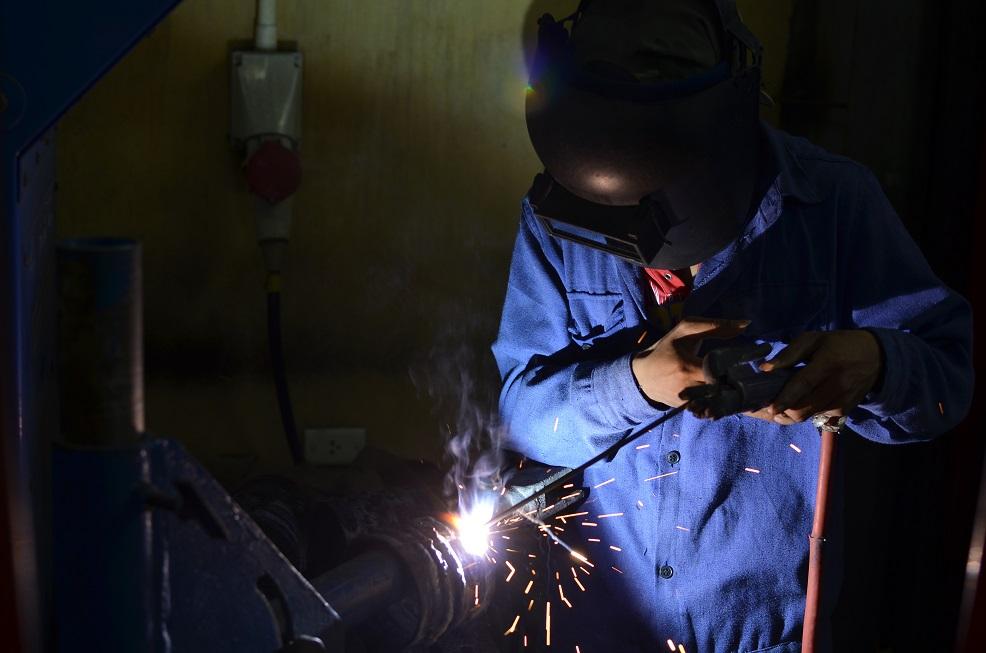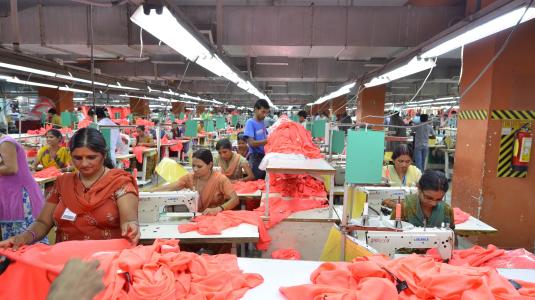Environment Friendly Techniques for Wastepaper Based Pulp and Paper Industries

© GIZ, Waste paper
The overall objective is to use environment friendly technologies and techniques is promoted in selected industry sectors, particularly from small and medium enterprises (SMEs). Pilot activities were taken up in the waste paper based paper industries in Vapi in Gujarat with positive results.
Main features and components
The negative environmental impacts from paper manufacturing in recovered fibre (RCF) based paper mills is mainly based on the quality of local or imported wastepaper and its quantity, energy consumption, chemicals used, water used and wastewater generated, emissions from boiler or energy sources and solid wastes (mainly plastic & ETP Sludge).
Baseline data compilation as well as the identification of core issues and potential solutions are the main features of this tool. The following core environmental issues were accordingly identified for finding solutions for pilot work:
- Issue 1: Less efficient electrical equipment
- Issue 2: Inefficient fibre recovery system
- Issue 3: Looping of waste (processed paper)
- Issue 4: Management of plastic waste
- Issue 5: Inorganic build up and high COD stream generation
- Issue 6: Inappropriate water quality for high quality product
- Issue 7: High heat loss through dryer
To the identified problems, potential solutions were identified and then discussed by the IGEP team together with the GCPC team with the industries for their techno-economic viability and implementation possibilities. The volunteering industries then implemented these measures with their own funds. The results were monitored for environmental and economic benefits and documented.
Implementation and work steps
The main steps involved in the demonstration of solutions on pilot basis included the following:
- Baseline data compilation
- Mapping of core issues
- Identification of potential solutions
- Consultations on applicability of identified solutions
- Implementation of solutions on pilot basis
- Monitoring of results and documentation of case examples
For the identified problems, the potential solutions were identified looking into the following:
- BREF (Best Available Techniques Reference Documents) from EU
- Cleaner Production measures implemented in industries by the Gujarat Cleaner Production Centre
- Some of the known solutions from the market
- Local and national technical consultants also were consulted while analysing the possible solutions on their suitability and feasibility
The identified solutions were 94 in number, which were then discussed with the individual industries that volunteered for implementation on pilot basis. On voluntary basis, 16 of these measures were then implemented by 7 industries.
Capacity building measures including awareness and training measures such as round table discussions and workshops were undertaken at various stages. After the pilot testing, activities were then undertaken for enabling up-scaling of the successfully implemented measures.
Output
- Broke and trimming reprocessing optimisation
- Continuous operation of clarifier as “save all” to produce sludge without fibre
- Reduction in the “edge cutter” waste by adjustment of “deckle guard”
- Installation of poire for fibre recovery from coarse rejects (plastic waste)
- Efficient fibre recovery through poly disc filter and quality process water for recirculation
- Process modification – recovery of fibre from couch pit and 2nd stage centri-cleaner
- Reduction in fibre loss at drum thickener
- Natural shade paper production
- Efficient fibre processing by recovery through rotary screen
- Secondary treatment at ETP for meeting discharge norms
- Acidic sizing (alum and rosin) replaced by surface sizing
- Condensate recovery
- Optimisation of heat losses in paper dryers
- Variable frequency drive on major electrical motors
- Efficient plastic waste handling
- Pressure regulating device on filter press for efficient moisture removal
Useful links
Downloads
Characteristics
Phase of intervention
Designing SIA, Technical infrastructure
Level of intervention
Company, Park management
Regions
Asia
Countries
India
Target groups
Company, SME, Industrial area management and operator, Policy makers
GIZ project
Sustainable environment-friendly industrial production (SEIP II) in India
